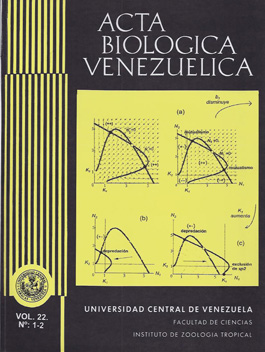SYNCHRONIZED REPRODUCTION OF TREES CAUSEO BY POLLEN EXCHANGE: MODELED AS COUPLED CHAOS SYSTEMS
Palabras clave:
Synchronized reproduction, masting, globally coupled map, Lyapunov exponents, coupled map lattice, pollen coupling of trees, dynamic spatial covariance.Resumen
Trees in mature forests often show intermittent reproduction. Intensivo flowering and seed production ocour only once in several years, often synchronized over a long distance. We study a coupled map model for the dynamics of energy reserve of individuáis, and show that trees become synchronized in reproduction when their fruit production is limited by the availability of outcross pollen. Without pollen limitation, the trees show independent chaotic fluctuation. With global pollen coupling, trees show various degree of reproductive synchronization. Lyapunov exponents are calculated analytically for perfectly synchronized forests, demonstrating that synchronized reproduction of trees can occur only if trees flower at low (but positive) levéis in a significant fraction of years, resulting in small fruit sets due to the shortage of outcross pollen. We then study a coupled map lattice with local pollen exchange. Dynamic spatial covariance shows that a strong synchronization over the whole forest can develop from rather short range pollen exchange. We also discuss the reproductive synchronization between different species who share common pollinators.


